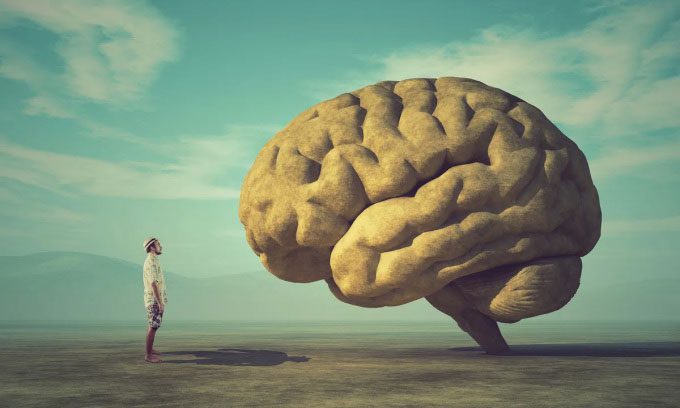Individuals born in the 1970s show a brain volume increase of 6.6% compared to the 1930 generation, according to research that indicates a potential reduction in dementia risk in older age.
Human brain size has increased over each decade at least since the 1930s, according to a study published in the journal JAMA Neurology on March 26. The research team suggests that this brain growth is likely a result of improved early-life environmental factors and may help reduce the likelihood of dementia later in life.

Human brains are getting larger over the decades. (Photo: Orla).
The research team examined MRI scans of 3,226 participants in the Framingham Heart Study (FHS). Launched in 1948 in Framingham, Massachusetts, the FHS includes participants born in every decade since the 1930s and now includes descendants of some of the original participants.
By observing MRI images (taken from 1999 to 2019), the researchers aimed to compare the brains of individuals born in the 1930s with those born in the 1970s. They discovered that the average brain volume increased from 1,234 ml to 1,321 ml during this 40-year period, corresponding to an approximate increase of 6.6%.
Surprisingly, the surface area of the participants’ brains increased even more: the average cortical surface area of those born in the 1970s was nearly 15% larger than that of those born 40 years earlier, increasing from 2,056 cm2 to 2,104 cm2.
The decade of birth appears to influence brain size and possibly long-term brain health, according to study author, neurologist Charles DeCarli. “Genetics play a significant role in determining brain size, but our results indicate that external factors—such as health, social, cultural, and educational influences—can also have an impact,” DeCarli explained.
Researchers still need to further investigate the precise effects of increased brain size on long-term health. However, the team notes that adult brain volume is an important predictive factor for cognitive function in older age. They hypothesize that larger brain volumes indicate greater brain development and better brain preservation, which may explain the gradually decreasing rates of dementia. In fact, although the number of Alzheimer’s cases continues to rise in the U.S., the prevalence rate has decreased over the past few decades.
The new study also reveals that the size of the hippocampus—closely associated with memory and learning—seems to increase each decade along with the amounts of white and gray matter in the brain. Based on these findings, DeCarli suggests that larger brain structures (similar to those observed in the new study) may reflect improved brain development and brain health.


















































